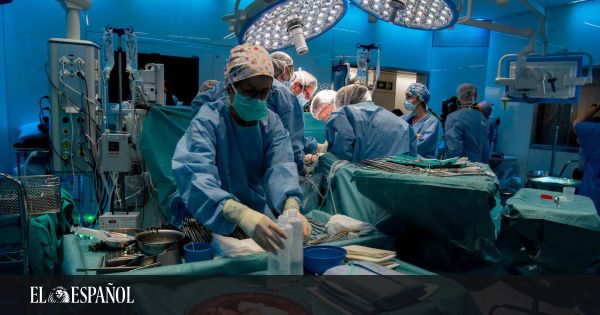
Related news
The Hospital Clínic de Barcelona performed the first uterine transplant in Spain on 5 October. The procedure has been possible thanks to the live donation of the uterus from one sister to another. The intervention was led by the head of the Gynecology Service, Francisco Carmona, and the head of the Urology and Kidney Transplant Service, Antonio Alcaraz.
This process, which began five years ago, is part of the research project Feasibility study of living donor uterine transplant procedure with grafting obtained by robotic surgery in order to validate the viability of this surgery.
The main requirement to be a candidate for this type of intervention is to have Rokitansky’s syndrome, that is, a congenital disorder of the female reproductive system that affects 1 in 5,000 women in the world. These women are already born without a uterus and without fallopian tubes. In this case, the recipient was the only compatible candidate out of the 30 who ran.
A process of high complexity
The uterus transplant is divided into two phases: the extraction of the latter performed by robotic surgery, to be as invasive as possible, and its implantation which consisted of open surgery. The approximate duration was about 12 hours, in terms of extraction, and about four implantation.
A multidisciplinary team of more than 20 people was in charge of carrying out the operation. Among them are professionals from different specialties: gynecologists, transplant surgeons, gynecology and transplant disease, anesthetists and disease assistants.
A process of high complexity, especially in what affects the first phase of extraction of the last of the donor. According to Dr. Alcaraz, “it is a complex organ with poor vascularization of the arteries and a large network of veins of which it is necessary to look for the majors to drain the blood that arrives at the uterus “.
To this is added that it is a long process in time since its success, as Dr. Carmona comments, “is determined by the viability of the organ, that this function and that the woman becomes pregnant.”
Two months postoperatively the evolution has been good as it has demonstrated its functionality having had the prescription her first menstrual cycle. In a few months, an embryo of the 11 previously in vitro fertilized will be implanted.
In case you become pregnant you will remain on the prescription with immunosuppressive drugs until a second pregnancy. Once she has completed her desire to be a mother the uterus will be removed by laparoscopy after the second birth, as long as the sea is her gestational desire.
To date, there have been about 70 uterine transplants worldwide, of which there are more than 20 live newborns. The first uterine transplant birth of a living donor took place in 2014 in Sweden at the University of Gothenburg’s Sahlgrenska University Hospital run by Mats Brännström.